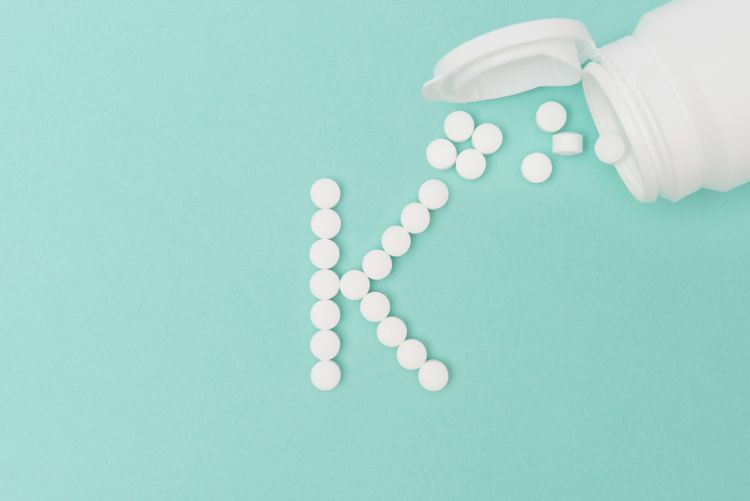Vitamin K2’s unique, significant health benefits, separate from vitamin K1, highlighted in new review paper. Is this the first step toward a vitamin K2 RDI?
This new review paper is a component of a campaign to raise awareness of the unique health impacts of vitamin K2 and thus the need for an RDI specifically for vitamin K2.
Photo © Shutterstock.com/photographyfirm

Vitamin K is a key nutrient and one that can be present in various forms, or isoforms-namely, vitamin K1 (phylloquinone) and vitamin K2 (menaquinone). These different forms of vitamin K have different structures and therefore different absorption rates, tissue distribution, bioavailability, and health effects in the body.
Historically, much attention has been paid to vitamin K1’s key role in blood clotting. For instance, the adequate intake (AI) level for vitamin K set in the U.S. is based on vitamin K1’s coagulation activity and is set at 120 mcg for male adults and 90 mcg for female adults. However, while much of vitamin K1’s effects are limited to the liver, vitamin K2’s health benefits are extrahepatic (extending beyond the liver), with recent science showing that vitamin K2 plays an important role related to such concerns as cardiovascular health, bone development and fractures, chronic kidney disease, and some cancers, with additional science exploring its impact on liver disease, immune function, neurological disease, and obesity. A new review paper1 published in the International Journal of Molecular Sciences highlights the differences between vitamin K1 and K2 and highlights the unique health benefits of vitamin K2 specifically.
The authors explain that: “Vitamin K1 is preferentially retained in the liver to assist carboxylation of clotting factors. In contrast, vitamin K2, particularly long-chain derivatives, are redistributed to the circulation and are available for extrahepatic tissues such as bone and vasculature.” As a result, they discuss in detail, there is a growing body of evidence to suggest that vitamin K2 is involved in multiple cellular processes and that it may play a beneficial role in the health areas outlined above.
According to the authors: “This review is the first to highlight differences between isoforms vitamin K1 and K2 by means of source, function, and extrahepatic activity.”
This review paper is the product of European Commission grants given to the NattoPharma International Research Network, a research initiative created by vitamin K2 supplier NattoPharma (Oslo, Norway; Edison, NJ) and involving academic researchers from Maastricht University in The Netherlands.
NattoPharma has previously stated a mission to see a recommended dietary intake (RDI) value ultimately established for vitamin K2. NattoPharma’s director of communications, Kate Quackenbush, explains how this new review paper is a component of a campaign to raise awareness of the unique health impacts of vitamin K2 and thus the need for an RDI specifically for vitamin K2. She also notes that the pursuit of a vitamin K2 RDI will be a slow process that “won’t happen overnight.”
“This is really one of the first comprehensive reviews of the evidence highlighting the differences between K1 and K2 that have been established” and that reflects the latest science on K2, she says. In order to convey to consumers that an inadequate level of vitamin K2 and related health consequences is a public health concern, “you need to build this body of evidence that shows that there is an absolute need for this because public health is at risk.”
Quackenbush says a second paper will soon be published from the NattoPharma International Research Network focusing specifically on the need for a vitamin K2-specific RDI value.
References:
- Halder M et al. “Vitamin K: double bonds beyond coagulation insights into differences between vitamin K1 and K2 in health and disease.” International Journal of Molecular Sciences. Published online February 19, 2019.
Magnesium L-threonate, Magtein, earns novel food authorization in the European Union
December 19th 2024According to the announcement, the authorization is also exclusive to AIDP and its partner company and licensee, ThreoTech, meaning that they are the only parties that can market magnesium L-threonate in the EU for a period of five years.
Standardized valerian extract shows acute sleep benefits after one day, says recent study
December 10th 2024Results showed that after a single dose, people taking the Valerian extract experiences an acute benefit on sleep, namely a significant increase in actual sleep time compared to baseline.